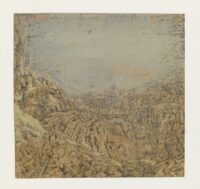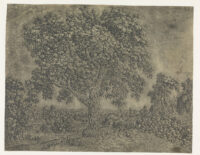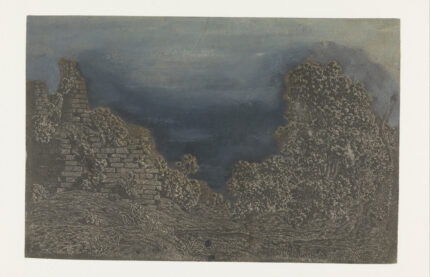 Visionary printmaker of the Dutch Golden Age Hercules Pieterszoon Segers (ca. 1589 – ca. 1638) inspired artists whose names are much more famous than his today, most notably Rembrandt van Rijn who was an avid collector of Segers paintings and prints. Very few Segers works are known to survive today — 183 unique impressions from 53 plates and 18 paintings — and the Rijksmuseum has the largest single collection of them with 74 impressions, two oil sketches and one painting.
Visionary printmaker of the Dutch Golden Age Hercules Pieterszoon Segers (ca. 1589 – ca. 1638) inspired artists whose names are much more famous than his today, most notably Rembrandt van Rijn who was an avid collector of Segers paintings and prints. Very few Segers works are known to survive today — 183 unique impressions from 53 plates and 18 paintings — and the Rijksmuseum has the largest single collection of them with 74 impressions, two oil sketches and one painting.
Segers’s prints are at the heart of the artist’s later fame. With an array of techniques whose identification has puzzled artists and scholars alike, he etched unusual colourful landscapes, seascapes, biblical scenes and other subjects. Rejecting the idea that prints from a single plate should all look the same, he produced impressions in varied colour schemes, on grounded paper or textiles, colouring his prints with the brush and altering his etching plates by adding lines in drypoint. Employing a variety of unusual techniques and materials, he turned each impression of his etchings into an individual work of art.
 The collection formed the core of the landmark Segers retrospective exhibited at the Rijksmuseum in late 2016, early 2017 and subsequently at the Metropolitan Museum of Art in New York City. That exhibition brought together almost all of the extant works known to exist today, including 110 prints and all 18 paintings. In preparing for the retrospective, researchers, scientists and art historians at the Rijksmuseum carried out an unprecedented in-depth study of Segers’ works. The study, which revolutionized understanding of his highly experimental techniques, was published in a new comprehensive oeuvre catalogue in 2017.
The collection formed the core of the landmark Segers retrospective exhibited at the Rijksmuseum in late 2016, early 2017 and subsequently at the Metropolitan Museum of Art in New York City. That exhibition brought together almost all of the extant works known to exist today, including 110 prints and all 18 paintings. In preparing for the retrospective, researchers, scientists and art historians at the Rijksmuseum carried out an unprecedented in-depth study of Segers’ works. The study, which revolutionized understanding of his highly experimental techniques, was published in a new comprehensive oeuvre catalogue in 2017.
The Rijksmuseum has now made much of that information available for free in a new online collection catalogue. All of the museum’s Segers pieces can be viewed in the glorious high resolution to which the Rijksmuseum has made us accustomed with entries summarizing the results of the research and lending new insight into the artist’s process, materials and the dates of his works. The catalogue entries include all known information about the works from measurements to techniques to inscriptions and collectors’ marks usually found on the versos of prints. There are also links to works in the Rijksmuseum, other public collections and private ones that are connected in some way to the Segers prints.
